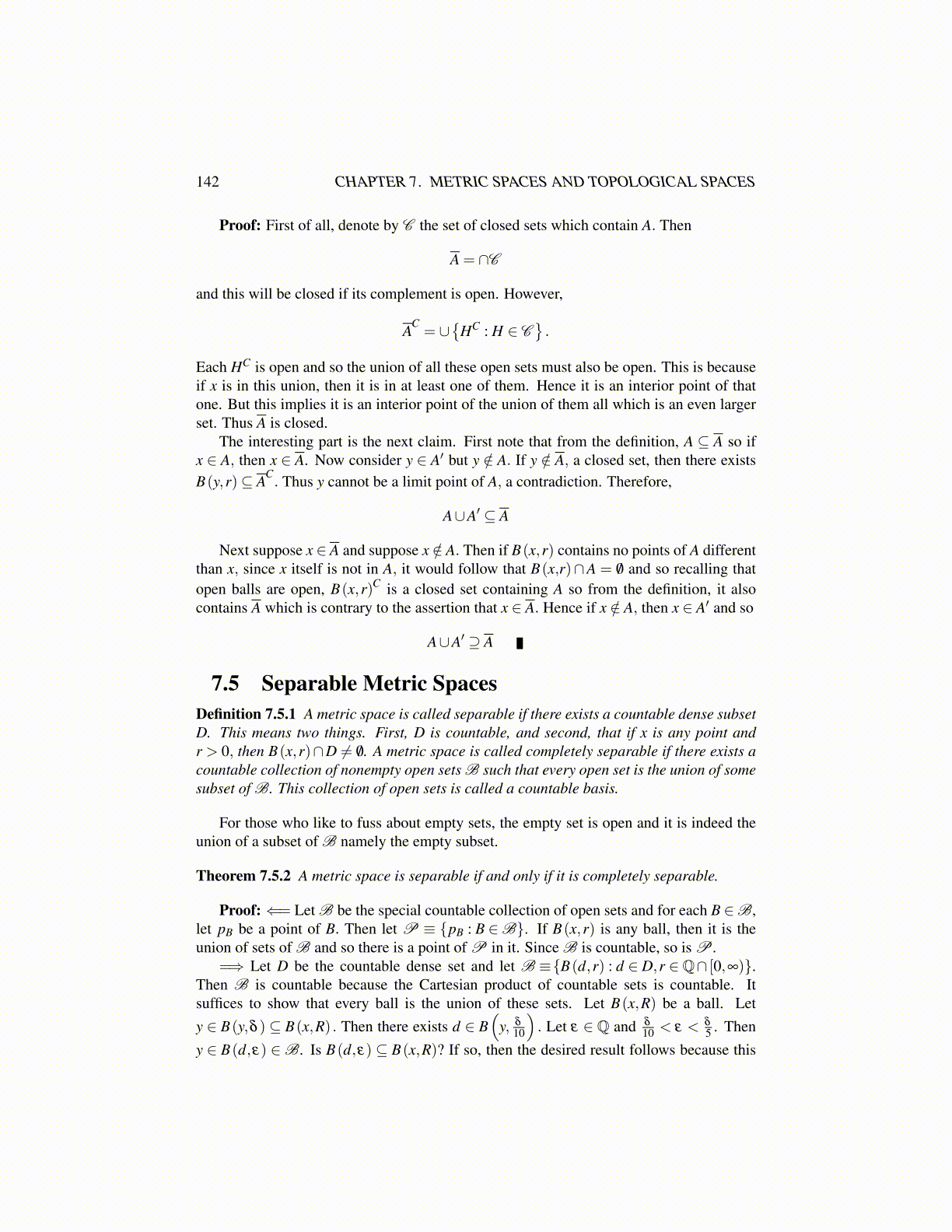
142 CHAPTER 7. METRIC SPACES AND TOPOLOGICAL SPACES
Proof: First of all, denote by C the set of closed sets which contain A. Then
A = ∩C
and this will be closed if its complement is open. However,
AC= ∪
{HC : H ∈ C
}.
Each HC is open and so the union of all these open sets must also be open. This is becauseif x is in this union, then it is in at least one of them. Hence it is an interior point of thatone. But this implies it is an interior point of the union of them all which is an even largerset. Thus A is closed.
The interesting part is the next claim. First note that from the definition, A ⊆ A so ifx ∈ A, then x ∈ A. Now consider y ∈ A′ but y /∈ A. If y /∈ A, a closed set, then there existsB(y,r)⊆ AC
. Thus y cannot be a limit point of A, a contradiction. Therefore,
A∪A′ ⊆ A
Next suppose x ∈ A and suppose x /∈ A. Then if B(x,r) contains no points of A differentthan x, since x itself is not in A, it would follow that B(x,r)∩A = /0 and so recalling thatopen balls are open, B(x,r)C is a closed set containing A so from the definition, it alsocontains A which is contrary to the assertion that x ∈ A. Hence if x /∈ A, then x ∈ A′ and so
A∪A′ ⊇ A
7.5 Separable Metric SpacesDefinition 7.5.1 A metric space is called separable if there exists a countable dense subsetD. This means two things. First, D is countable, and second, that if x is any point andr > 0, then B(x,r)∩D ̸= /0. A metric space is called completely separable if there exists acountable collection of nonempty open sets B such that every open set is the union of somesubset of B. This collection of open sets is called a countable basis.
For those who like to fuss about empty sets, the empty set is open and it is indeed theunion of a subset of B namely the empty subset.
Theorem 7.5.2 A metric space is separable if and only if it is completely separable.
Proof: ⇐= Let B be the special countable collection of open sets and for each B ∈B,let pB be a point of B. Then let P ≡ {pB : B ∈B}. If B(x,r) is any ball, then it is theunion of sets of B and so there is a point of P in it. Since B is countable, so is P .
=⇒ Let D be the countable dense set and let B ≡{B(d,r) : d ∈ D,r ∈Q∩ [0,∞)}.Then B is countable because the Cartesian product of countable sets is countable. Itsuffices to show that every ball is the union of these sets. Let B(x,R) be a ball. Lety ∈ B(y,δ ) ⊆ B(x,R) . Then there exists d ∈ B
(y, δ
10
). Let ε ∈ Q and δ
10 < ε < δ
5 . Theny ∈ B(d,ε) ∈B. Is B(d,ε) ⊆ B(x,R)? If so, then the desired result follows because this